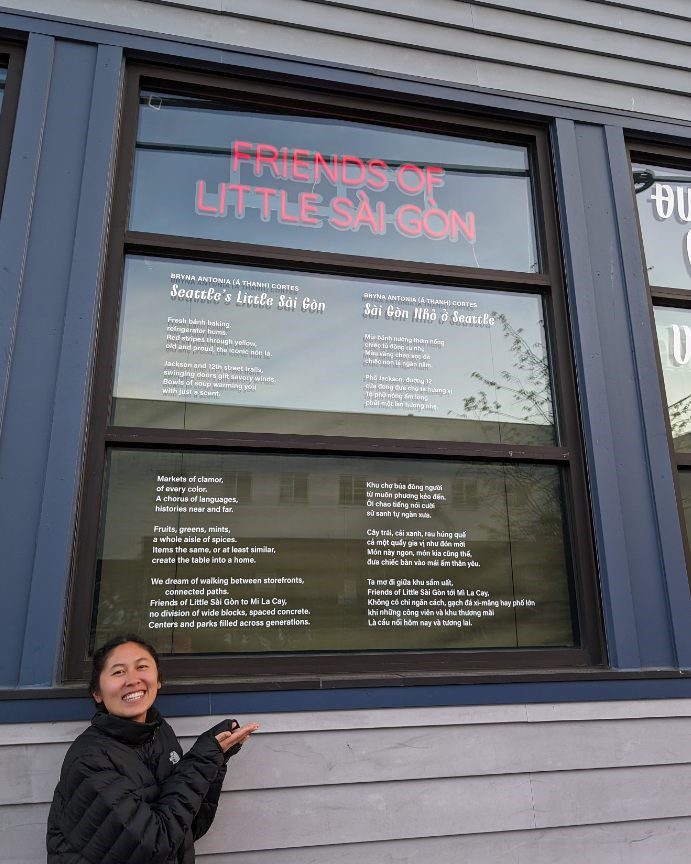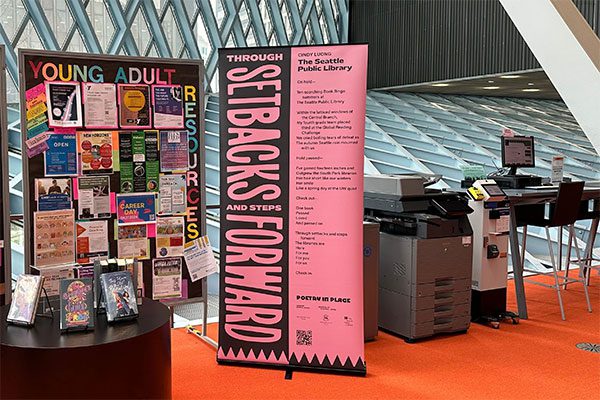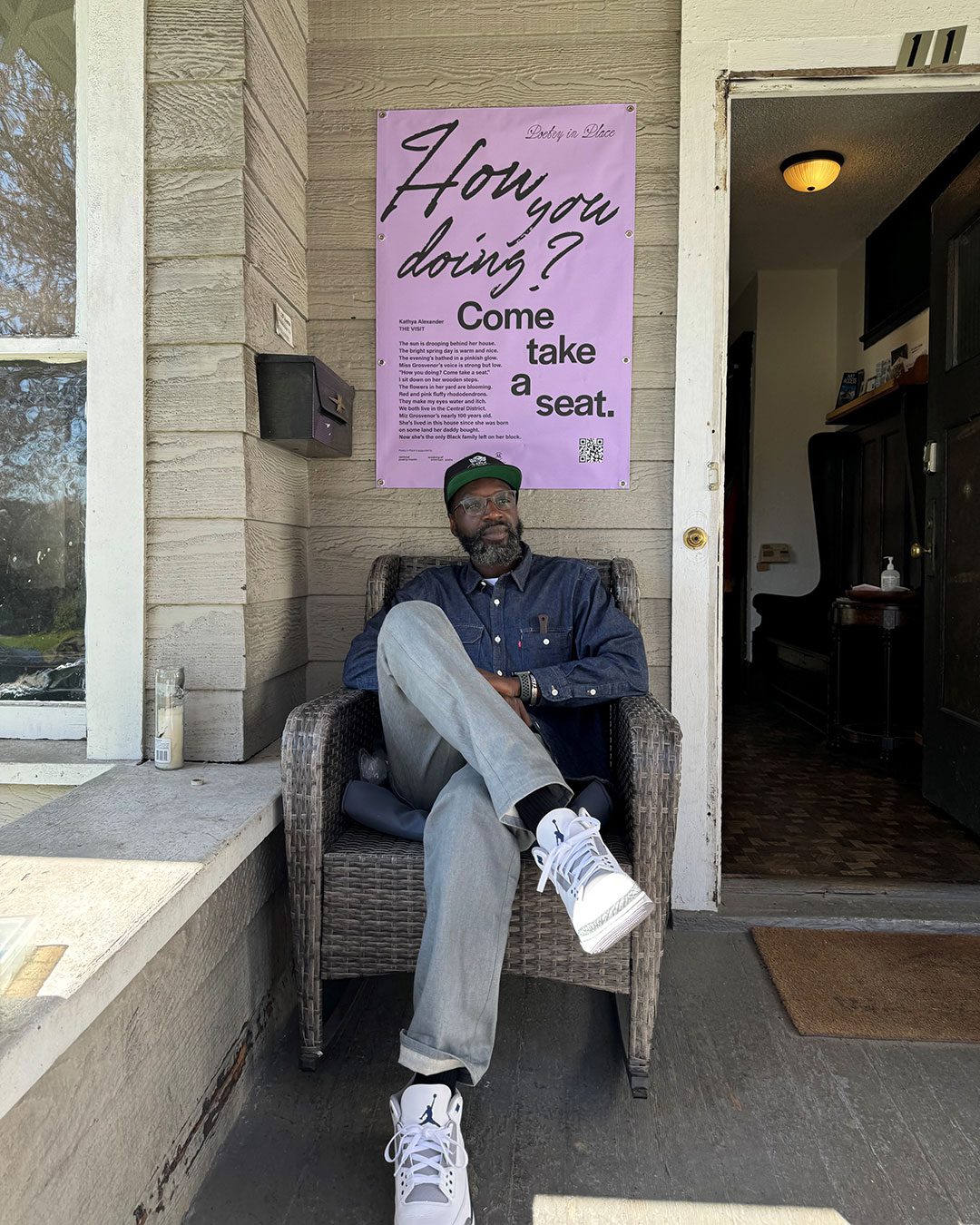
On Sunday, October 21, Ellen Sollod’s latest work was installed in the Seattle cityscape. Origami Tessellation 324.3.4 (Fractured), a 28-foot-tall cylinder of stainless steel, was placed in the median of Mercer Street at Boren Avenue North. We asked Sollod a few questions about the work; you’ll find her answers below, mixed in with photographs of the piece as it was being created at Fabrication Specialties Ltd of Seattle, and then installed on Mercer Street this last weekend.
 1. How did you come up with the concept for Origami Tessellation 324.3.4 (Fractured)?
1. How did you come up with the concept for Origami Tessellation 324.3.4 (Fractured)?
I was interested in speaking to the future of SLU and was struck by the growth of biotech and high tech. At the same time, we have the newly improved SLU park. So, I was also interested in talking about nature. Fractal forms are common in nature, science and art. A tessellation is a repetitive pattern, like a fractal. So my goal was to speak to all three and this form seemed right.
 2. What does the name represent?
2. What does the name represent?
The title is the specific tessellation or folding pattern that was used to derive the sculpture. It is a tessellation used by engineers to study buckling patterns of cylinders. It is theoretical math and in practice, the form wants to buckle because of the force on the sides. We “fractured” the form by making separate sections and then put it together to form a column that exists in physical space in the real world.
 3. What do you hope the workers of South Lake Union think when they see the piece?
3. What do you hope the workers of South Lake Union think when they see the piece?
I hope they enjoy it day and night–how the stainless steel surface reacts to light and how the form changes from different viewing angles. I hope it becomes a bit of a landmark for the Mercer Corridor so that people will know where they are and identify South Lake Union with it and vice versa.
 4. Tell me about the fabrication process.
4. Tell me about the fabrication process.
Fabrication took approximately 8 months. I worked with Fabrication Specialties Ltd, based here in Seattle to fabricate the work. They are highly skilled craftsmen and art makers with great attention to detail. I worked with Fabrication Specialties and engineer Chuck Morris throughout the process to solve various technical challenges. I also worked with the landscape architect HBB early in the design process to design the mound and the landscape plan.
 Prior to fabrication, I made several models of various sizes to study the form. My models were paper and cardboard. Fabrication Specialties made partial models of steel. I developed the perforation pattern and made a full size paper model of one full side to see how it would behave as it moved around the form. I spent time in the shop as the work was fabricated. So, let’s just say, I was there in the beginning, middle, end, on the phone, in the shop.
Prior to fabrication, I made several models of various sizes to study the form. My models were paper and cardboard. Fabrication Specialties made partial models of steel. I developed the perforation pattern and made a full size paper model of one full side to see how it would behave as it moved around the form. I spent time in the shop as the work was fabricated. So, let’s just say, I was there in the beginning, middle, end, on the phone, in the shop.
6. Did the work come out as you envisioned?
I’m delighted with how it came out. One of the concerns you always have is whether the scale would be right. Often things can look great in the shop and “shrink” on site. I feel like it “holds” the space quite well. We are still working on the lighting so that will change a bit before it is complete. I was delighted to have the opportunity to be a part of the revitalization of SLU and had a great design team to work with throughout.
Thank you Ellen, for talking with us about this work!
Fabrication photos courtesy of the artist; installation photos courtesy of Kelly Pajek.



